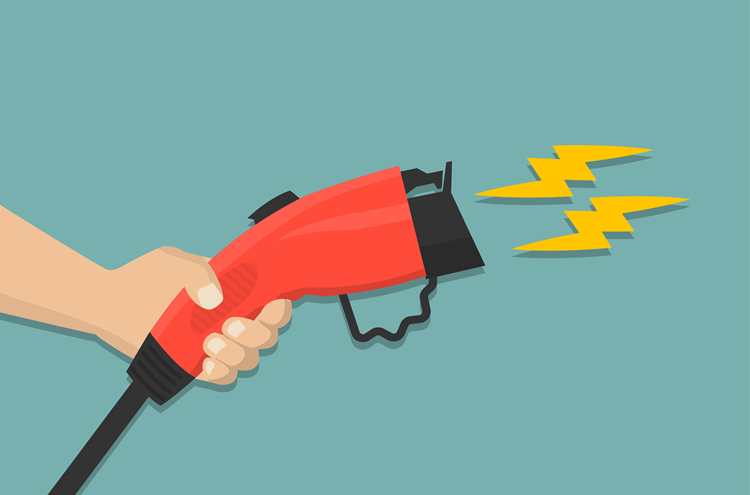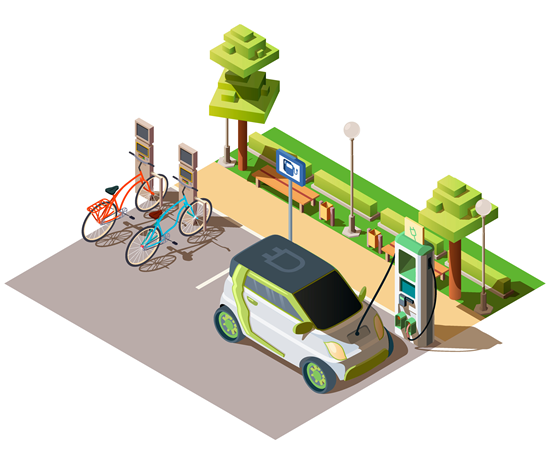Nick Butler, director of Drivetech, shares some best practice tips to help fleets get their drivers EV ready.

The AA’s iconic yellow van fleet has seen countless improvements over the decades – improvements still very much underway. In December, The AA welcomed 15 battery electric vehicles (BEVs) and 15 PHEV Ford Transit Customs into our roadside service fleet, marking our first major trial of plug-in vehicles for roadside assistance vans. The trial underscores our commitment to reducing emissions and achieving net zero by 2035.
As a business, we’re very mindful that the shift to EVs introduces new challenges, both for ourselves and for businesses embarking on the transition. The environmental and cost benefits are undeniable. But realising the potential of EVs relies on how fleet managers support the transition.
Know what you’re dealing with
EVs are undoubtedly an exciting opportunity for businesses looking to boost sustainability and reduce costs. But making the most of the transition requires drivers who are not only comfortable but confident behind the wheel – drivers who may have been exposed to EV myths and concerns. Equally, EVs operate differently from traditionally fuelled vehicles, featuring instant acceleration, regenerative braking and other advanced technologies. The vehicle’s unique characteristics can pose risks if drivers are not properly trained.
Maintaining safety as a top priority is absolutely critical as drivers adjust to the new technologies ahead. Here are our top tips for getting drivers EV acclimatised.
EV versus ICE: the must-know differences
The instant power of EV acceleration, enabled by the absence of manual gears, can catch untrained drivers off guard. Similarly, regenerative braking (which slows the car when the accelerator is released) impacts stopping distances and requires a nuanced understanding of the vehicle’s capabilities. Awareness of the following will boost driver confidence of the new technology from the start:
- Speed - Higher speeds significantly increase energy use. Drivers can achieve much more range by maintaining a steady, moderate pace whenever possible
- Acceleration - Aggressive acceleration uses more power. Smooth and gradual acceleration can help to conserve energy and extend range
- Regenerative braking - Teach drivers to leverage regenerative braking, particularly during stop-and-go traffic or when going down hill
Tackling range anxiety

Range anxiety is one of the biggest concerns for drivers transitioning to EVs. But the reality is that it’s very much now a thing of the past. Indeed, the EV callouts we handled last year where vehicles had run out of charge comprised just 1.9% of all AA EV roadside calls. However, the perception persists that range is a potential issue.
Integrating charging into daily routines helps reduce range anxiety, ensuring both driver and fleet efficiency. Meanwhile, mapping out available charge points on journeys can also be highly reassuring. Managers can help drivers to get ahead with the tools and knowledge they need by addressing these key areas:
- Highlighting the locations of charging stations along regular routes
- Provide guidance on home charging setups, especially for drivers using company-owned or personal vehicles for business
- Teach charging best practices, such as maintaining optimal battery levels without overcharging
- Provide updated and comprehensive maps or apps that display nearby charging stations, including those with rapid charging options
Encourage efficient driving habits
EVs have a more limited range than most ICE vehicles. Driving habits directly impact how far an EV can travel on a single charge. The following tips can boost driving efficiency across your fleet:
- Read the road ahead. Minimise unnecessary acceleration and braking by anticipating traffic and road conditions
- Maintain steady speeds. Higher speeds consume more energy, so encourage drivers to avoid excessive speeds
- Leverage eco modes. Many EVs include eco-driving features to enhance energy efficiency. Ensure drivers are familiarised with these before driving
Empower drivers with knowledge through training
Investing in targeted EV training will also build confidence and reduce risks. Effective training should cover:
- EV familiarisation
- Safe driving techniques for EVs
- Charging protocols and infrastructure use
- Using eco-driving features for efficiency
- Maintenance best practice to prolong vehicle lifespan
An opportunity for growth
Businesses can turn the challenges of EV adoption into opportunities for growth and improvement. When drivers are confident and prepared, they become instrumental in unlocking the full potential of an electric fleet. With the right strategies, the road to electrification can be a smooth and successful journey—delivering environmental, financial, and operational benefits for years to come. With sale of new ICE vehicles due to end in 2030, now is the time to start paving the way for a greener, safer, and more sustainable future.
To find out more about training to support driver wellbeing and safety, visit www.drivetech.co.uk.
Up to 59% off business breakdown cover
Running a retail business with vehicles at its heart means that staying still isn’t an option. The AA’s business breakdown cover will make sure your drivers get back on the road quickly – and with minimum disruption – if the worst happens. All you need to do is choose the right level of cover for you.

Get more commission for your charging points...
Opcharge is adding value to Bira and it’s members by providing fully funded Electric Vehicle charging solutions.
With tailor-made solutions, fast installation times and press coverage for new installations, Bira members can drive footfall and customer retention while promoting sustainability by using 100% renewable energy by using Opcharge.

Stay in the loop on sustainability with our helpful hub
In the often fast-moving world of sustainability it can be intimidating to even attempt to stay up to date with the latest eco updates, not to mention working out what is relevant to your business.
Bira can help you handle this with our Sustainability in Retail Hub, which features the latest information that you need to know. Visit the hub today and keep on top of the sustainability information that matters to you.
Latest Resources
-
Christmas window display competition
Not only will you get to showcase your festive spirit, but you can also win a hamper worth over £150
-
The Home Office’s ‘Myth Buster’ guide on Martyn’s Law – How small businesses can prepare
Martyn’s Law sets new standards to protect the public from terrorism — here’s how small businesses can prepare for the changes.